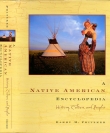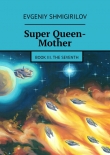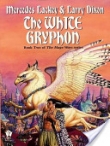
Текст книги "The British Study Edition of the Urantia Papers"
Автор книги: Tigran Aivazian
Жанр:
Религия
сообщить о нарушении
Текущая страница: 128 (всего у книги 295 страниц)
82:6.1 There are no pure races in the world today. The early and original evolutionary peoples of colour have only two representative races persisting in the world, the yellow man and the black man; and even these two races are much admixed with the extinct coloured peoples. While the so-called white race is predominantly descended from the ancient blue man, it is admixed more or less with all other races much as is the red man of the Americas.
82:6.2 Of the six coloured Sangik races, three were primary and three were secondary. Though the primary races – blue, red, and yellow – were in many respects superior to the three secondary peoples, it should be remembered that these secondary races had many desirable traits which would have considerably enhanced the primary peoples if their better strains could have been absorbed.
82:6.3 Present-day prejudice against “half-castes,” “hybrids,” and “mongrels” arises because modern racial crossbreeding is, for the greater part, between the grossly inferior strains of the races concerned. You also get unsatisfactory offspring when the degenerate strains of the same race intermarry.
82:6.4 If the present-day races of Urantia could be freed from the curse of their lowest strata of deteriorated, antisocial, feeble-minded, and outcast specimens, there would be little objection to a limited race amalgamation. And if such racial mixtures could take place between the highest types of the several races, still less objection could be offered.
82:6.5 Hybridization of superior and dissimilar stocks is the secret of the creation of new and more vigorous strains. And this is true of plants, animals, and the human species. Hybridization augments vigour and increases fertility. Race mixtures of the average or superior strata of various peoples greatly increase creative potential, as is shown in the present population of the United States of North America. When such matings take place between the lower or inferior strata, creativity is diminished, as is shown by the present-day peoples of southern India.
82:6.6 Race blending greatly contributes to the sudden appearance of new characteristics, and if such hybridization is the union of superior strains, then these new characteristics will also be superior traits.
82:6.7 As long as present-day races are so overloaded with inferior and degenerate strains, race intermingling on a large scale would be most detrimental, but most of the objections to such experiments rest on social and cultural prejudices rather than on biological considerations. Even among inferior stocks, hybrids often are an improvement on their ancestors. Hybridization makes for species improvement because of the role of the dominant genes. Racial intermixture increases the likelihood of a larger number of the desirable dominants being present in the hybrid.
82:6.8 ¶ For the past 100 years more racial hybridization has been taking place on Urantia than has occurred in thousands of years. The danger of gross disharmonies as a result of crossbreeding of human stocks has been greatly exaggerated. The chief troubles of “half-breeds” are due to social prejudices.
82:6.9 The Pitcairn experiment of blending the white and Polynesian races turned out fairly well because the white men and the Polynesian women were of fairly good racial strains. Interbreeding between the highest types of the white, red, and yellow races would immediately bring into existence many new and biologically effective characteristics. These three peoples belong to the primary Sangik races. Mixtures of the white and black races are not so desirable in their immediate results, neither are such mulatto offspring so objectionable as social and racial prejudice would seek to make them appear. Physically, such white-black hybrids are excellent specimens of humanity, notwithstanding their slight inferiority in some other respects.
82:6.10 ¶ When a primary Sangik race amalgamates with a secondary Sangik race, the latter is considerably improved at the expense of the former. And on a small scale – extending over long periods of time – there can be little serious objection to such a sacrificial contribution by the primary races to the betterment of the secondary groups. Biologically considered, the secondary Sangiks were in some respects superior to the primary races.
82:6.11 After all, the real jeopardy of the human species is to be found in the unrestrained multiplication of the inferior and degenerate strains of the various civilized peoples rather than in any supposed danger of their racial interbreeding.
82:6.12 [Presented by the Chief of Seraphim stationed on Urantia.]
PAPER № 83
THE MARRIAGE INSTITUTION
Chief of Seraphim
83:0.1 This is the recital of the early beginnings of the institution of marriage. It has progressed steadily from the loose and promiscuous matings of the herd through many variations and adaptations, even to the appearance of those marriage standards which eventually culminated in the realization of pair matings, the union of one man and one woman to establish a home of the highest social order.
83:0.2 Marriage has been many times in jeopardy, and the marriage mores have drawn heavily on both property and religion for support; but the real influence which forever safeguards marriage and the resultant family is the simple and innate biologic fact that men and women positively will not live without each other, be they the most primitive savages or the most cultured mortals.
83:0.3 It is because of the sex urge that selfish man is lured into making something better than an animal out of himself. The self-regarding and self-gratifying sex relationship entails the certain consequences of self-denial and ensures the assumption of altruistic duties and numerous race-benefiting home responsibilities. Herein has sex been the unrecognized and unsuspected civilizer of the savage; for this same sex impulse automatically and unerringly compels man to think and eventually leads him to love.
1. MARRIAGE AS A SOCIETAL INSTITUTION83:1.1 Marriage is society’s mechanism designed to regulate and control those many human relations which arise out of the physical fact of bisexuality. As such an institution, marriage functions in two directions:
83:1.2 1. In the regulation of personal sex relations.
83:1.3 2. In the regulation of descent, inheritance, succession, and social order, this being its older and original function.
83:1.4 ¶ The family, which grows out of marriage, is itself a stabilizer of the marriage institution together with the property mores. Other potent factors in marriage stability are pride, vanity, chivalry, duty, and religious convictions. But while marriages may be approved or disapproved on high, they are hardly made in heaven. The human family is a distinctly human institution, an evolutionary development. Marriage is an institution of society, not a department of the church. True, religion should mightily influence it but should not undertake exclusively to control and regulate it.
83:1.5 Primitive marriage was primarily industrial; and even in modern times it is often a social or business affair. Through the influence of the mixture of the Andite stock and as a result of the mores of advancing civilization, marriage is slowly becoming mutual, romantic, parental, poetical, affectionate, ethical, and even idealistic. Selection and so-called romantic love, however, were at a minimum in primitive mating. During early times husband and wife were not much together; they did not even eat together very often. But among the ancients, personal affection was not strongly linked to sex attraction; they became fond of one another largely because of living and working together.
2. COURTSHIP AND BETROTHAL83:2.1 Primitive marriages were always planned by the parents of the boy and girl. The transition stage between this custom and the times of free choosing was occupied by the marriage broker or professional matchmaker. These matchmakers were at first the barbers; later, the priests. Marriage was originally a group affair; then a family matter; only recently has it become an individual adventure.
83:2.2 Coercion, not attraction, was the approach to primitive marriage. In early times woman had no sex aloofness, only sex inferiority as inculcated by the mores. As raiding preceded trading, so marriage by capture preceded marriage by contract. Some women would connive at capture in order to escape the domination of the older men of their tribe; they preferred to fall into the hands of men of their own age from another tribe. This pseudo elopement was the transition stage between capture by force and subsequent courtship by charming.
83:2.3 An early type of wedding ceremony was the mimic flight, a sort of elopement rehearsal which was once a common practice. Later, mock capture became a part of the regular wedding ceremony. A modern girl’s pretensions to resist “capture,” to be reticent toward marriage, are all relics of olden customs. The carrying of the bride over the threshold is reminiscent of a number of ancient practices, among others, of the days of wife stealing.
83:2.4 Woman was long denied full freedom of self-disposal in marriage, but the more intelligent women have always been able to circumvent this restriction by the clever exercise of their wits. Man has usually taken the lead in courtship, but not always. Woman sometimes formally, as well as covertly, initiates marriage. And as civilization has progressed, women have had an increasing part in all phases of courtship and marriage.
83:2.5 Increasing love, romance, and personal selection in premarital courtship are an Andite contribution to the world races. The relations between the sexes are evolving favourably; many advancing peoples are gradually substituting somewhat idealized concepts of sex attraction for those older motives of utility and ownership. Sex impulse and feelings of affection are beginning to displace cold calculation in the choosing of life partners.
83:2.6 The betrothal was originally equivalent to marriage; and among early peoples sex relations were conventional during the engagement. In recent times, religion has established a sex taboo on the period between betrothal and marriage.
3. PURCHASE AND DOWRY83:3.1 The ancients mistrusted love and promises; they thought that abiding unions must be guaranteed by some tangible security, property. For this reason, the purchase price of a wife was regarded as a forfeit or deposit which the husband was doomed to lose in case of divorce or desertion. Once the purchase price of a bride had been paid, many tribes permitted the husband’s brand to be burned upon her. Africans still buy their wives. A love wife, or a white man’s wife, they compare to a cat because she costs nothing.
83:3.2 The bride shows were occasions for dressing up and decorating daughters for public exhibition with the idea of their bringing higher prices as wives. But they were not sold as animals – among the later tribes such a wife was not transferable. Neither was her purchase always just a cold-blooded money transaction; service was equivalent to cash in the purchase of a wife. If an otherwise desirable man could not pay for his wife, he could be adopted as a son by the girl’s father and then could marry. And if a poor man sought a wife and could not meet the price demanded by a grasping father, the elders would often bring pressure to bear upon the father which would result in a modification of his demands, or else there might be an elopement.
83:3.3 As civilization progressed, fathers did not like to appear to sell their daughters, and so, while continuing to accept the bride purchase price, they initiated the custom of giving the pair valuable presents which about equalled the purchase money. And upon the later discontinuance of payment for the bride, these presents became the bride’s dowry.
83:3.4 The idea of a dowry was to convey the impression of the bride’s independence, to suggest far removal from the times of slave wives and property companions. A man could not divorce a dowered wife without paying back the dowry in full. Among some tribes a mutual deposit was made with the parents of both bride and groom to be forfeited in case either deserted the other, in reality a marriage bond. During the period of transition from purchase to dowry, if the wife were purchased, the children belonged to the father; if not, they belonged to the wife’s family.
4. THE WEDDING CEREMONY83:4.1 The wedding ceremony grew out of the fact that marriage was originally a community affair, not just the culmination of a decision of two individuals. Mating was of group concern as well as a personal function.
83:4.2 ¶ Magic, ritual, and ceremony surrounded the entire life of the ancients, and marriage was no exception. As civilization advanced, as marriage became more seriously regarded, the wedding ceremony became increasingly pretentious. Early marriage was a factor in property interests, even as it is today, and therefore required a legal ceremony, while the social status of subsequent children demanded the widest possible publicity. Primitive man had no records; therefore must the marriage ceremony be witnessed by many persons.
83:4.3 At first the wedding ceremony was more on the order of a betrothal and consisted only in public notification of intention of living together; later it consisted in formal eating together. Among some tribes the parents simply took their daughter to the husband; in other cases the only ceremony was the formal exchange of presents, after which the bride’s father would present her to the groom. Among many Levantine peoples it was the custom to dispense with all formality, marriage being consummated by sex relations. The red man was the first to develop the more elaborate celebration of weddings.
83:4.4 ¶ Childlessness was greatly dreaded, and since barrenness was attributed to spirit machinations, efforts to ensure fecundity also led to the association of marriage with certain magical or religious ceremonials. And in this effort to ensure a happy and fertile marriage, many charms were employed; even the astrologers were consulted to ascertain the birth stars of the contracting parties. At one time the human sacrifice was a regular feature of all weddings among well-to-do people.
83:4.5 Lucky days were sought out, Thursday being most favourably regarded, and weddings celebrated at the full of the moon were thought to be exceptionally fortunate. It was the custom of many Near Eastern peoples to throw grain upon the newlyweds; this was a magical rite which was supposed to ensure fecundity. Certain Oriental peoples used rice for this purpose.
83:4.6 Fire and water were always considered the best means of resisting ghosts and evil spirits; hence altar fires and lighted candles, as well as the baptismal sprinkling of holy water, were usually in evidence at weddings. For a long time it was customary to set a false wedding day and then suddenly postpone the event so as to put the ghosts and spirits off the track.
83:4.7 The teasing of newlyweds and the pranks played upon honeymooners are all relics of those far-distant days when it was thought best to appear miserable and ill at ease in the sight of the spirits so as to avoid arousing their envy. The wearing of the bridal veil is a relic of the times when it was considered necessary to disguise the bride so that ghosts might not recognize her and also to hide her beauty from the gaze of the otherwise jealous and envious spirits. The bride’s feet must never touch the ground just prior to the ceremony. Even in the XX century it is still the custom under the Christian mores to stretch carpets from the carriage landing to the church altar.
83:4.8 One of the most ancient forms of the wedding ceremony was to have a priest bless the wedding bed to ensure the fertility of the union; this was done long before any formal wedding ritual was established. During this period in the evolution of the marriage mores the wedding guests were expected to file through the bedchamber at night, thus constituting legal witness to the consummation of marriage.
83:4.9 The luck element, that in spite of all premarital tests certain marriages turned out bad, led primitive man to seek insurance protection against marriage failure; led him to go in quest of priests and magic. And this movement culminated directly in modern church weddings. But for a long time marriage was generally recognized as consisting in the decisions of the contracting parents – later of the pair – while for the last 500 years church and state have assumed jurisdiction and now presume to make pronouncements of marriage.
5. PLURAL MARRIAGES83:5.1 In the early history of marriage the unmarried women belonged to the men of the tribe. Later on, a woman had only one husband at a time. This practice of one-man-at-a-time was the first step away from the promiscuity of the herd. While a woman was allowed but one man, her husband could sever such temporary relationships at will. But these loosely regulated associations were the first step toward living pairwise in distinction to living herdwise. In this stage of marriage development children usually belonged to the mother.
83:5.2 The next step in mating evolution was the group marriage. This communal phase of marriage had to intervene in the unfolding of family life because the marriage mores were not yet strong enough to make pair associations permanent. The brother and sister marriages belonged to this group; five brothers of one family would marry five sisters of another. All over the world the looser forms of communal marriage gradually evolved into various types of group marriage. And these group associations were largely regulated by the totem mores. Family life slowly and surely developed because sex and marriage regulation favoured the survival of the tribe itself by ensuring the survival of larger numbers of children.
83:5.3 Group marriages gradually gave way before the emerging practices of polygamy – polygyny and polyandry – among the more advanced tribes. But polyandry was never general, being usually limited to queens and rich women; furthermore, it was customarily a family affair, one wife for several brothers. Caste and economic restrictions sometimes made it necessary for several men to content themselves with one wife. Even then, the woman would marry only one, the others being loosely tolerated as “uncles” of the joint progeny.
83:5.4 The Jewish custom requiring that a man consort with his deceased brother’s widow for the purpose of “raising up seed for his brother,” was the custom of more than half the ancient world. This was a relic of the time when marriage was a family affair rather than an individual association.
83:5.5 The institution of polygyny recognized, at various times, four sorts of wives:
83:5.6 1. The ceremonial or legal wives.
83:5.7 2. Wives of affection and permission.
83:5.8 3. Concubines, contractual wives.
83:5.9 4. Slave wives.
83:5.10 ¶ True polygyny, where all the wives are of equal status and all the children equal, has been very rare. Usually, even with plural marriages, the home was dominated by the head wife, the status companion. She alone had the ritual wedding ceremony, and only the children of such a purchased or dowered spouse could inherit unless by special arrangement with the status wife.
83:5.11 The status wife was not necessarily the love wife; in early times she usually was not. The love wife, or sweetheart, did not appear until the races were considerably advanced, more particularly after the blending of the evolutionary tribes with the Nodites and Adamites.
83:5.12 The taboo wife – one wife of legal status – created the concubine mores. Under these mores a man might have only one wife, but he could maintain sex relations with any number of concubines. Concubinage was the stepping stone to monogamy, the first move away from frank polygyny. The concubines of the Jews, Romans, and Chinese were very frequently the handmaidens of the wife. Later on, as among the Jews, the legal wife was looked upon as the mother of all children born to the husband.
83:5.13 The olden taboos on sex relations with a pregnant or nursing wife tended greatly to foster polygyny. Primitive women aged very early because of frequent childbearing coupled with hard work. (Such overburdened wives only managed to exist by virtue of the fact that they were put in isolation one week out of each month when they were not heavy with child.) Such a wife often grew tired of bearing children and would request her husband to take a second and younger wife, one able to help with both childbearing and the domestic work. The new wives were therefore usually hailed with delight by the older spouses; there existed nothing on the order of sex jealousy.
83:5.14 The number of wives was only limited by the ability of the man to provide for them. Wealthy and able men wanted large numbers of children, and since the infant mortality was very high, it required an assembly of wives to recruit a large family. Many of these plural wives were mere labourers, slave wives.
83:5.15 Human customs evolve, but very slowly. The purpose of a harem was to build up a strong and numerous body of blood kin for the support of the throne. A certain chief was once convinced that he should not have a harem, that he should be contented with one wife; so he promptly dismissed his harem. The dissatisfied wives went to their homes, and their offended relatives swept down on the chief in wrath and did away with him then and there.








